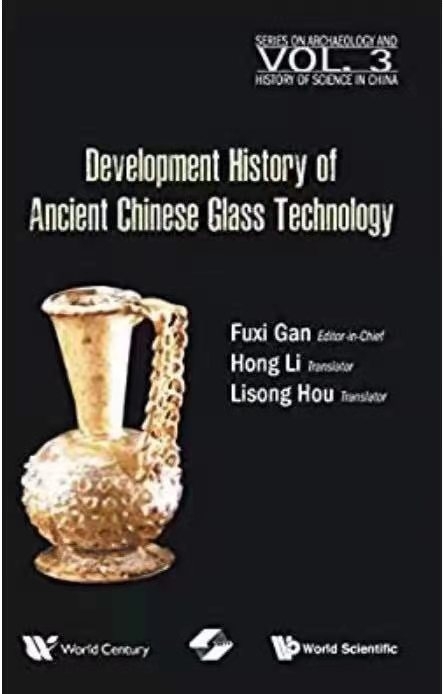Hong Li, Lisong Hou
In 2016, Professor Fuxi Gan from Shanghai Institute of Optics and Fine Mechanics (SIOM), China, an editor-in-chief, published a Chinese book entitled “Development History of Ancient Chinese Glass Technology” by Scientific and Technical Publishers, Shanghai, which detailed both homemade ancient Chinese glass products and the imported products via the Silk Road(s). Fulfilling Professor Gan’s long-time wishes of introducing ancient Chinese glass history and development to the world, the English version has been produced in 2020 by Dr. Hong Li (Nippon Electric Glass, US), Professor Lisong Hou (SIOM, China) and their coworkers after four years of effort. The English version is published by World Scientific (Singapore, 2021). The book is divided into 18 chapters along with hundreds of compositions of the ancient glass artifacts from archeology discoveries. It provides a comprehensive, balanced review on the thousands of years of ancient Chinese glass and related technology development, which can benefit archeologists and glass researchers for their ongoing studies of ancient Chinese glass history and technology.
Worldwide research on ancient glass began in the early 20th century. A consensus has been reached in the community of Archaeology that the first manmade or synthetic glasses, based on archaeological findings, originated in the Middle East during 5000 - 3000 BC. Around 3500 BC, the earliest manmade, opaque glass beads were found in Egypt and Eastern Mesopotamia, now parts of the countries such as Iraq and Syria. After 1500 BC, Egyptian started production of glass pots, which had been lasted until the 9th century BC. Evolution of glassmaking revived in Mesopotamia in 2500 – 1000 BC, and during the following 500 years glass production centered in Alessandria and eventually spread to Italy. In the first century BC, Romans greatly developed glass blowing process for making glass products and the Roman Empire did much to spread glassmaking technology with its conquests, trade relations, road building, and effective political and economic governance.
By contrast, the manufacturing technology of pottery and ceramics were well developed in ancient China. The earliest pottery and ceramics are dated to the Shang Dynasty – the Zhou Dynasty (1700 BC – 770 BC), while the earliest ancient glass artifacts unearthed in China are dated to the Western Han Dynasty. Utilizing the state-of-the art analytical and spectroscopic methods, the recent findings demonstrate that China had already developed its own glassmaking technology at latest since 200 BC There are two schools of viewpoint on the origin of ancient Chinese glass. One believes that ancient Chinese glass originated from the import of glassmaking technology from the West, i.e., Sino-West trade exchanges in the Western Han Dynasty (206 BC – 25 AD). The other scientifically demonstrates that homemade ancient Chinese glass with unique domestic formula containing both PbO and BaO was made as early as in the Pre-Qin Period or even the Warring State Period (770 BC – 221 BC), known as Youhsa or Faience.
